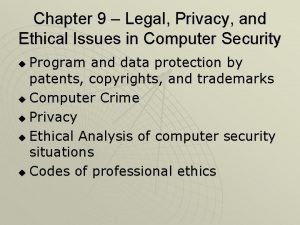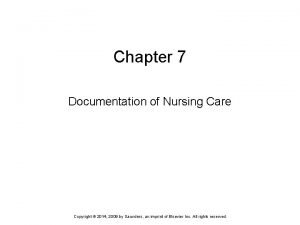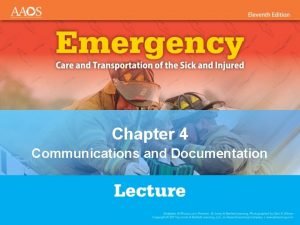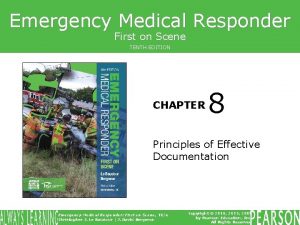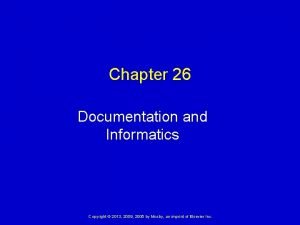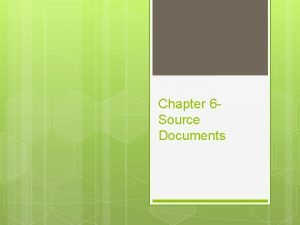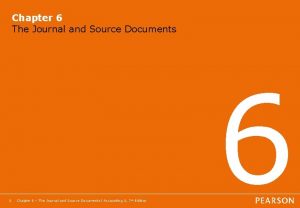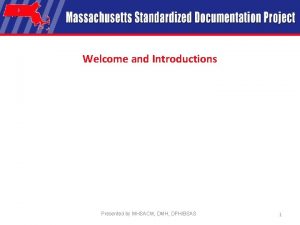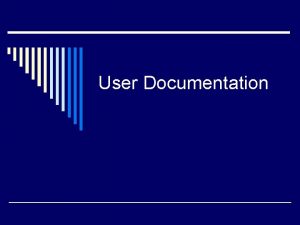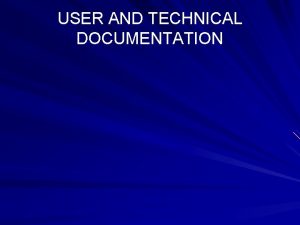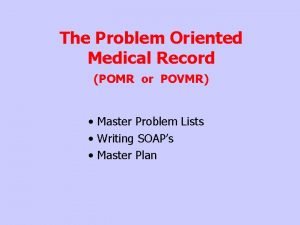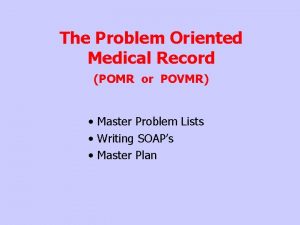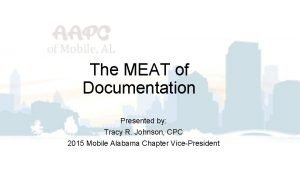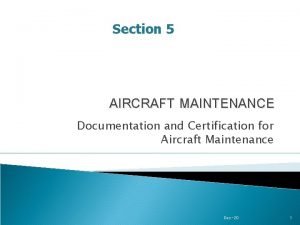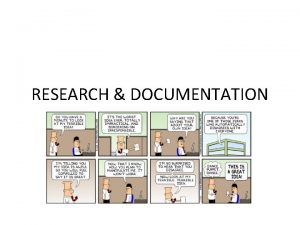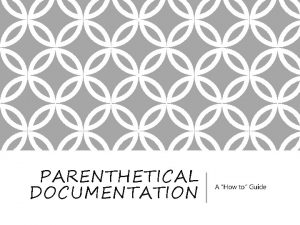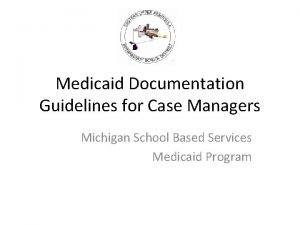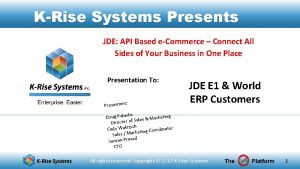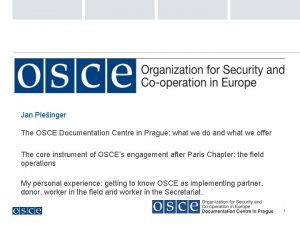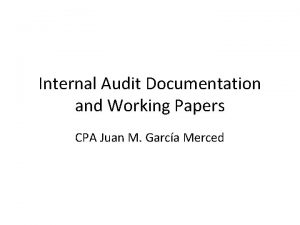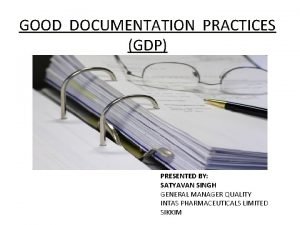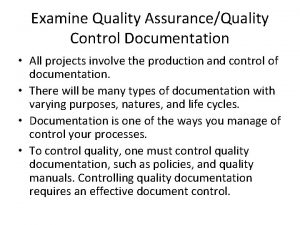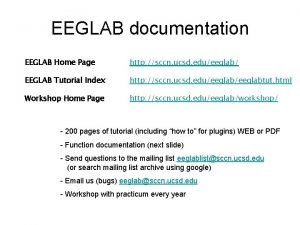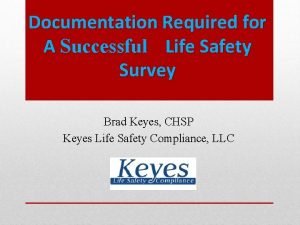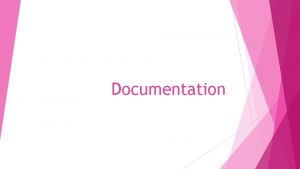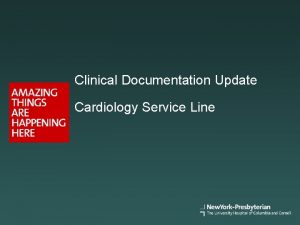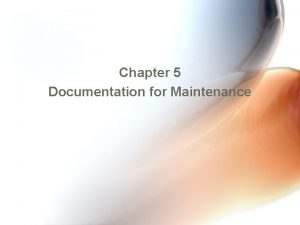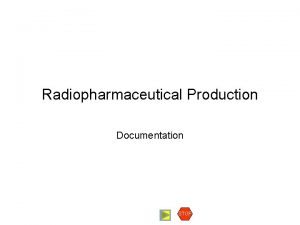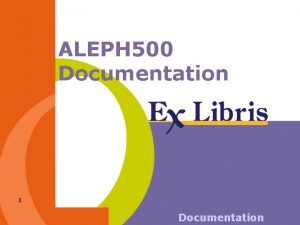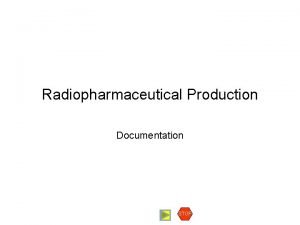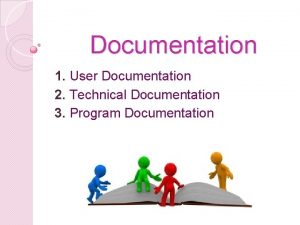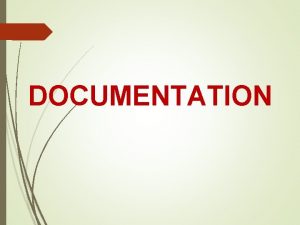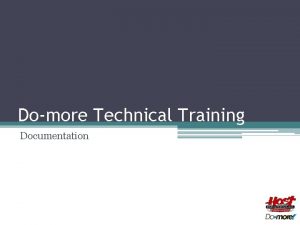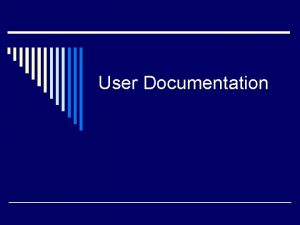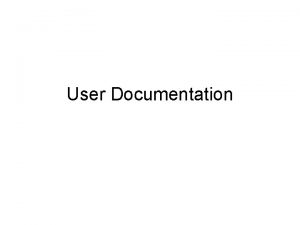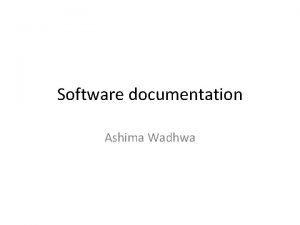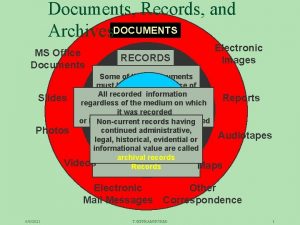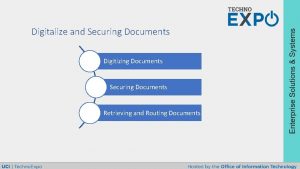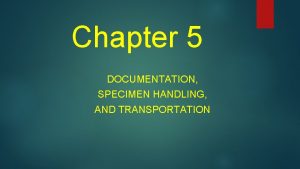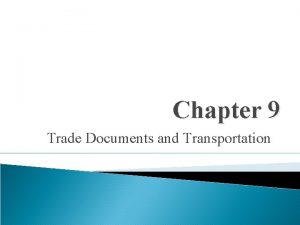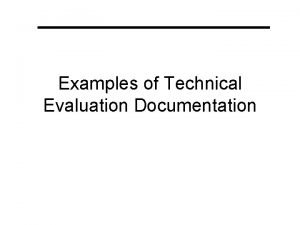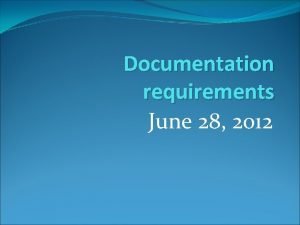Chapter 9 International Documents International Documents n Documentation

















































- Slides: 49

Chapter 9 International Documents

International Documents n Documentation Requirements n Invoices n Export Documents n Import Documents n Transportation Documents as a Marketing Tool

Documentation Requirements Most international transactions require numerous documents: n It is important that each of these documents be filled correctly and within a specific time frame. Each document has different requirements. n It is common to issue more than one original document – one for each of several parties. n Most countries still require documents to be printed on paper and not submitted electronically.

Invoices Commercial invoices for transactions conducted in an international environment are much more complete and detailed than in a domestic environment. They must include: n A detailed description of the goods, with HS number, so that the goods can be classified correctly by Customs n The Incoterm s® rule of the transaction n Details on the costs of domestic transportation, loading, insurance, etc. , so as to help Customs determine the dutiable value of the goods n Details on the weight and dimensions of the goods n Details on the itinerary of the shipment n The terms of payment

A simple international invoice

Other Invoices n Pro forma Invoice A quote (preview of the commercial invoice) provided by the exporter to the importer for the purpose of obtaining a letter of credit. n Consular Invoice A commercial invoice that is printed on stationery provided by the consulate of the country in which the good will be imported. n Specialized Invoice Some countries require that invoices be printed on special forms.

Export Documents Export License Destination Control Statement Export Country’s Regulations Shipper’s Export Declaration Certificate of End-Use

Export License An export license is an express authorization by a given country’s government to export a specific product before it is shipped. What types of products need an export license? Depending on the country of export, it could be: n National treasures, antiques, or works of art n Products put under control for political or military purposes n Scarce natural resources

An Export License from Malaysia

U. S. Export Controls The United States export control policies (regrouped under the Export Administration Regulations [EAR] and administered by the Bureau of Industry and Security) focus on three elements to determine if an export needs a license: n The type of product exported n The person or entity purchasing the product n The ultimate country of destination It is the always the responsibility of the exporter to insure that the goods can be legally exported from the United States.

U. S. Export Controls—Product The Bureau of Industry and Security maintains a Commerce Control List, in which all products of concern to the United States are given an Export Control Classification Number (ECCN). Products need a license because they may be potentially dangerous or have “dual use. ” Goods in the CCL may fall under the control of one or more government agency including the Department of Defense, Department of State, or the Drug Enforcement Agency. Items not requiring a license are classified as “EAR 99. ” Most goods are classified EAR 99.

U. S. Export Controls—Person or Entity Even if a product is classified as EAR 99, exporters still need to determine if the purchaser of the product is on one of several lists: n The Entity List n The Unverified List n The Specially Designated Nationals and Blocked Persons List n The Denied Persons List A product sold domestically can still be subject to export controls, if the purchaser is on one of these lists.

U. S. Export Controls—Country The U. S. government considers some countries “friendly” and others “unfriendly. ” For five countries, the U. S. has a total embargo, and no products can be exported there: Currently the U. S. has an embargo on Cuba, Iran, North Korea, Sudan, and Syria. For other countries there are many limits to what can be shipped there: Burma/Myanmar, the Democratic Republic of the Congo, Iraq, the Ivory Coast, Liberia, Libya, Somalia, Yemen, and Zimbabwe. n If a license is necessary, an exporter needs to obtain an Individual Validated Export License, or the express authorization to ship to a country.

Destination Control Statement A Destination Control Statement is required for products that have obtained a Validated Export License: “This merchandise licensed by U. S. for ultimate destination [country]. Diversion contrary to U. S. law prohibited. ”

Shipper’s Export Declaration The Shipper’s Export Declaration (SED) is a data-collection document. It is used to tabulate what products are exported from the United States, and to which countries they are exported. Most other countries have a similar data-gathering export requirement. The European Union has a similar requirement, called the Single Administrative Document. Interestingly, the United States does not require an SED for shipments to Canada but it is required for shipments to the U. S. Virgin Islands, Puerto Rico, and Guam.

The United States Shipper’s Export Declaration

End-Use Certificate An End-Use Certificate is a document required by some exporting countries in the case of sensitive exports, such as ammunition, to ensure that the product is used for acceptable (to the exporting country’s government) purposes.

Export Taxes and Quotas Some countries require exporters to pay an export tax on certain commodities. Export quotas are a limit, set by the exporting country’s government, on the quantity of a specific commodity that can be exported in a given year. Governments control their exports when the commodity that is exported is scarce. They can also do it when their country is one of the few that produces a particular product.

Import Documents Import License Certificate of Origin Certificate of Insurance Certificate of Free Inspection Sale Phyto-Sanitary Importing Certificate Country’s Certificate of Regulations Consular Invoice Manufacture Certificate of Analysis Import Forms Certificate of Certification Other Certificates

Origin of the Goods n Certificate of Origin A Certificate of Origin is a document provided by the exporter’s chamber of commerce that attests that the goods originated from the country in which the exporter is located. n Certificate of Manufacture A Certificate of Manufacture is a document provided by the exporter’s chamber of commerce that attests that the goods were manufactured in the country in which the exporter is located. The NAFTA Certificate of Origin is actually a Certificate of Manufacture.

A Certificate of Origin from New Zealand

A NAFTA Certificate of Origin (Certificate of Manufacture) from The United States

Inspection of the Goods n Certificate of Inspection A Certificate of Inspection is a document provided by an independent inspection company that attests that the goods conform to the description contained in the invoice provided by the exporter. n Certificate of Analysis A Certificate of Analysis attests that the goods conform to the chemical description and purity levels contained in the invoice provided by the exporter. n Phyto-Sanitary Certificate A Phyto-Sanitary Certificate attests that agricultural goods are free or pests and disease and conform to the standards of the importing country.

A Certificate of Analysis from Iran

A Phyto-Sanitary Certificate from The Ukraine

Conformity of the Goods n Certificate of Certification A document provided by an independent inspection company, or by the Agricultural Department of the exporting country’s government, that attests that the goods conform to the agricultural standards of the importing country. n Certificate of Free Sale A document that attests that the product exported conforms to all of the regulations in place in the exporting country and that it can be sold freely in the exporting country. Some importers use this certificate as a guarantee of quality if they are worried that the exporter will ship sub-standard goods.

A Certificate of Certification from the Czech Republic

A Certificate of Free Sale from Thailand

Certificate of Insurance A Certificate of Insurance is a document provided by the exporter’s insurance company that attests that the goods are insured during their international voyage. A certificate of insurance can be based on a single policy specifically contracted for a particular voyage, or it can be based on the open policy that covers all of an exporter’s shipments. In the case of an open policy, the insurance company provides the exporter with a series of certificates that it then uses as needed.

A Certificate of Insurance from Australia

Other Import Documents n Consular Invoice A commercial invoice that is printed on stationery provided by the consulate of the country in which the good will be imported. n Import License The express authorization, granted by the government of the importing country, to import a particular product in a given country. n Import Forms All countries have specific administrative forms that have to be submitted by the importer in order to clear Customs.

Transport Documents Bills of Lading Charter Parties Aircraft Leases Ocean Bill of Lading Air Waybill Intermodal Bill of Lading Uniform Bill of Lading Packing List Manifest

Bill of Lading A bill of lading is a generic term used to describe a document that fulfills three functions in international transport: n It is a contract between the and the shipper. The carrier agrees to transport the goods from A to B for a given price. n It is a receipt for the goods. Signed by the carrier, it signifies that the goods were received in good condition. n It is a certificate of title. Whichever party has the original bill of lading is the owner of the goods. However, it can get slightly more complicated.

Bill of Lading as a Contract of Carriage A bill of lading is a contract between the carrier (the company operating the mode of transportation) and the shipper (the firm that enters the contact with the carrier). The shipper is either the exporter or the importer, depending on the Incoterm s® rule used; the Incoterms® rule determines which is responsible to arrange for pre-carriage, main carriage or on-carriage. For a given amount of money, the carrier agrees to transport the goods from a certain location to another. Each contract of carriage can be negotiated, but most are standard agreements. Some include the costs of loading and unloading the goods, others do not.

Bill of Lading as a Receipt for the Goods There are two alternatives when the carrier receives the goods in the exporting country: n If the goods are received in good condition, the carrier just signs the bill of lading, without any other annotation. Such a bill of lading is called a clean bill of lading. n If the goods are received in a condition that concerns the carrier (dirty, wet, poorly packaged, rusty, leaking, etc. ), the shipper makes an annotation of the issue, then signs. Such a bill of lading is called a soiled bill of lading. Letters of credit always call for a clean bill of lading.

Bill of Lading as a Certificate of Title On a bill of lading, there is a box called “consignee, ” in which the shipper identifies the firm that will take delivery of the goods from the carrier. There are two alternative ways to fill this box: n If the box is left blank or the words “to order” are used, then the bill of lading is said to be negotiable, and the owner of the goods in the destination port is the entity with the original bill of lading. The goods can be sold while they are being transported. n If the name of the consignee is entered, then only that firm can pick up the goods from the carrier. Such a bill of lading is called a straight bill of lading. Only ocean bills of lading are negotiable.

Types of Bills of Lading A bill of lading takes different names depending on the mode of transportation chosen: n It can be called an ocean bill of lading for transportation by ocean n An air waybill when the goods travel by air n An intermodal bill of lading when the goods travel on more than one mode of transportation under a single contract n A uniform bill of lading when the goods travel by road or rail The shipper (the firm that enters the contact with the carrier) is either the exporter or the importer, depending on the Incoterm s® rule used.

An Ocean Bill of Lading from Hong Kong

An Air Waybill from the United States

Charter Party A charter party is a type of contract of carriage between a carrier and a shipper, in which the shipper uses all or most of the carrying capacity of the ship. It is generally used to transport bulk commodities, such as grain, fertilizer, ore, or oil. A charter party can be a contract for a single voyage, but it can also be for a series of voyages to transport a large quantity of a particular commodity, or for a specific duration of six months or a year.

Aircraft Leases (I) A shipper intent on utilizing the entire capacity of an aircraft enters into a lease agreement. The agreement can be for a single voyage, a series of voyages, or a duration. n Wet Lease An agreement under which the owner of the aircraft provides the airplane, insurance, maintenance services, fuel, and a flight crew to the lessor, who has to cover all of the other variable costs, such as airport fees. n ACMI Lease An agreement under which the owner of the aircraft provides the airplane, crew, maintenance, and insurance to the lessor, who has to cover all of the other variable costs, such as airport fees and fuel.

Aircraft Leases (II) n Dry Lease An agreement between the owner (lessor) of an aircraft and the lessee in which the owner provides only the aircraft and no other services. n Damp Lease An agreement between the owner of an aircraft and the lessee, under which the owner provides some services in addition to the aircraft itself. For example, an ACMI lease is a damp lease because it does not cover fuel.

Packing List and Manifest n Packing List A document prepared by the exporter that lists out what a shipment contains, in great detail. A packing list always accompanies every shipment. n Manifest A document generated by the shipping company (the carrier), which lists all cargo onboard the transportation vehicle. There is a manifest for every voyage undertaken by the carrier. The manifest is frequently requested by the Customs authorities of a port of call.

Shipper’s Letter of Instruction A Letter of Instruction is a document in which the shipper spells out how it wants the carrier to handle the goods while they are in transit. For refrigerated cargo, it specifies the temperature that must be maintained in the container and the monitoring frequency of that temperature. For live cargo, the frequency of feeding, quantities required, and water needs. For manufactured goods, the letter of instruction can specify a position on the ship: to minimize movements, the cargo can be stowed below deck, at the water line. If it is dangerous, the shipper can request a stow above deck.

Dangerous Goods Shipments of dangerous goods are regulated by the International Maritime Organization’s International Maritime Dangerous Goods Code, the International Civil Aviation Transport Association’s Dangerous Goods Regulations, the International Civil Aviation Organization’s Technical Instructions for the Safe Transport of Dangerous Goods by Air or by local shipment codes. All require different additional documents and specific stowing instructions.

Electronic Data Interchange (EDI) is the electronic exchange of documents, from computer to computer. EDI allows the instantaneous notification of the other party when a particular step in the shipping of goods has taken place. Under a DAT shipment, for example, once the goods have been unloaded at the terminal, the exporter can notify the importer electronically that the goods are now its responsibility. Under a CPT shipment, the exporter can notify the importer that the goods have been delivered to the first carrier.

Electronic Data Interchange (EDI) The sender and the recipient must reach two agreements in order for EDI to work well: n They must agree to a technical EDI understanding —the specific technology used for the exchange. The United Nation’s EDIFACT standard is the most likely to eventually prevail as the international standard, but there is currently no official international standard. n There must also be a legal agreement between the parties defining the responsibilities, timing, liabilities for errors, the “evidentiary value” of messages, and other legal issues.

Document Preparation as a Marketing Tool (I) An exporter that does an excellent job at preparing documents can get a strategic advantage, as the importer is likely to be able to clear Customs quickly and process payment efficienty if all of the documents are conform. n The pro forma invoice must be a perfect preview of the actual invoice. n The commercial invoice must be clear, detailed, and precise. It must include all the information that is necessary for the importer to clear Customs and minimize the duty that it has to pay. n All the certificates requested have to be provided, in the manner requested.

Document Preparation as a Marketing Tool (II). n The correct number of originals and copies of all documents must be prepared or collected. n The packing list must be prepared carefully and precisely. An incomplete or imprecise packing list increases the probability of a Customs inspection. n The export paperwork must be prepared and filed correctly and in a timely manner.
 Chapter 9: ethics of documentation and authentication
Chapter 9: ethics of documentation and authentication Pie nursing documentation example
Pie nursing documentation example Chapter 4 communications and documentation
Chapter 4 communications and documentation Chapter 8 principles of effective documentation
Chapter 8 principles of effective documentation Chapter 26 informatics and documentation
Chapter 26 informatics and documentation Chapter 6 documents
Chapter 6 documents Chapter 6 documents
Chapter 6 documents Kronos rest api
Kronos rest api Golden thread of documentation
Golden thread of documentation User documentation guidelines
User documentation guidelines Computer system documentation
Computer system documentation Icd-10 tips for internal medicine
Icd-10 tips for internal medicine Soap pomr
Soap pomr Pomr medical definition
Pomr medical definition Netflix api
Netflix api Meat documentation example
Meat documentation example System documentation techniques
System documentation techniques Python documentation generator sphinx
Python documentation generator sphinx #include servo.h download
#include servo.h download Aircraft schematic manual
Aircraft schematic manual Sandcastle doc
Sandcastle doc Documentation in research
Documentation in research Qms documentation structure
Qms documentation structure Fda good documentation practices
Fda good documentation practices What is parenthetical documentation
What is parenthetical documentation Outpatient clinical documentation improvement
Outpatient clinical documentation improvement Telematics api
Telematics api Octopus api examples
Octopus api examples Nstp documentation
Nstp documentation Mental health documentation training
Mental health documentation training Case manager notes examples
Case manager notes examples Scbon
Scbon Krise systems
Krise systems Osce documentation centre in prague
Osce documentation centre in prague Internal audit working paper
Internal audit working paper Ibm campaign automation
Ibm campaign automation Data protector user guide
Data protector user guide Hotel reservation system documentation
Hotel reservation system documentation Good documentation practices error correction
Good documentation practices error correction Alcoac
Alcoac Laserfiche tutorial
Laserfiche tutorial Scope of gym management system project
Scope of gym management system project Quality control documentation
Quality control documentation Ewt softer
Ewt softer Eeglab documentation
Eeglab documentation Keyes life safety
Keyes life safety Soapier charting
Soapier charting Fusion active
Fusion active Clinical documentation improvement for cardiology
Clinical documentation improvement for cardiology Documentation preparing the list of works cited
Documentation preparing the list of works cited
